The Future of Modern Car Safety: How Your Next Car will Protect You
Car safety features have come a long way from mechanical seatbelts, all-steel bodies, and hydraulic brakes. Between 1997 and 2020, there have been 23,343 fewer motor vehicle fatalities reported by the National Highway Traffic Administration (NHTSA). A huge part of this improvement can be attributed to a slew of new car safety features that were formerly only available in luxury automobiles but are now making their way into mass-market vehicles.
In this article, we will discuss how car safety technology has evolved over the years to keep drivers and passengers comfortable and away from harm.
-
SRS Airbags
-
Anti Lock Braking System
-
Advanced Driver Assistance Systems
-
Stability Control System
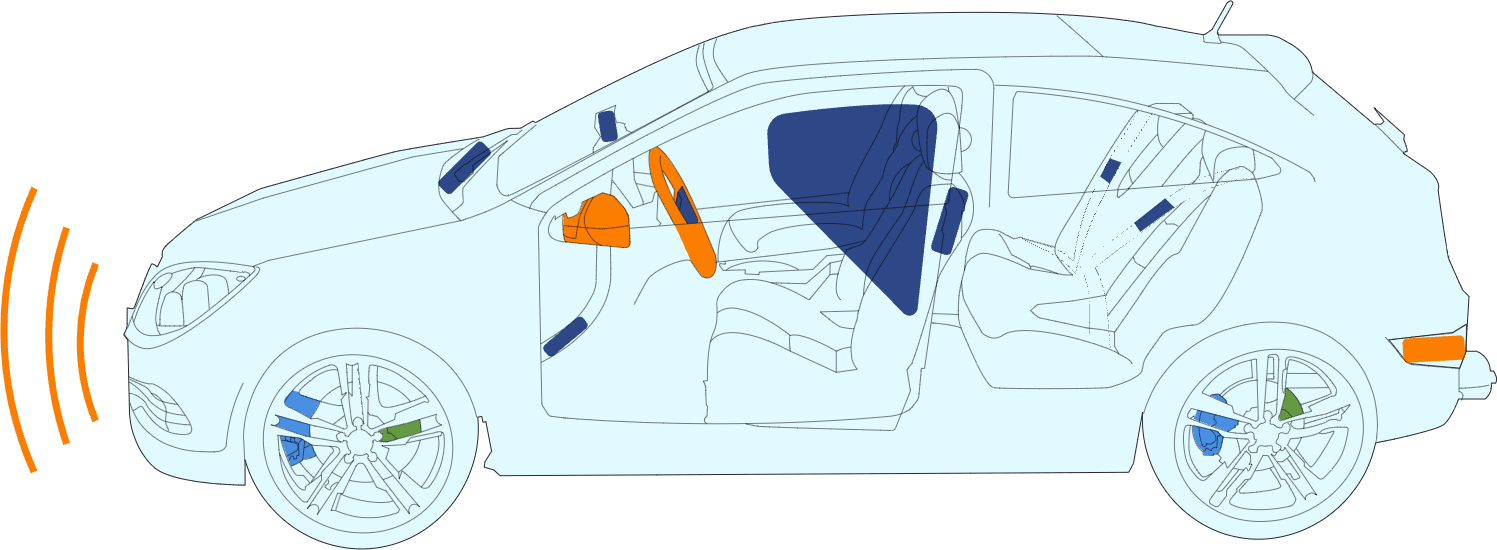
-
Airless Tires
-
Biometric Sensors
-
Connected Cars
-
Augmented Reality Dashboards
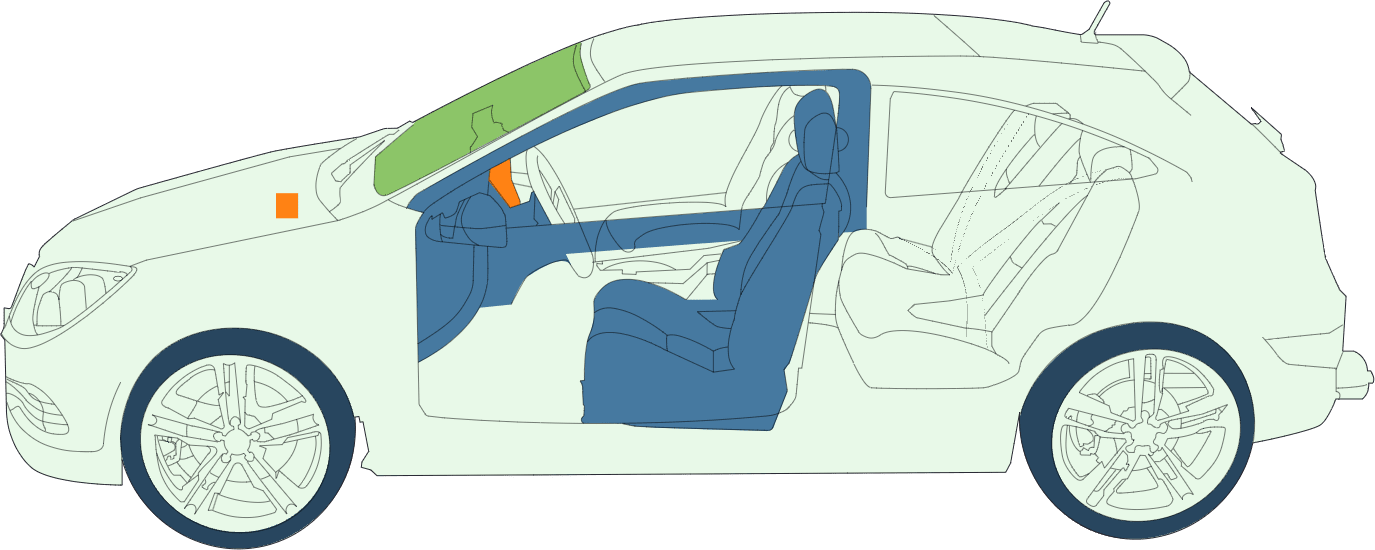
Modern Car Safety Features
Modern cars today are equipped with different safety features to help drivers navigate the road better. There are basic safety features designed to mitigate the impact of a collision, as well as more advanced features designed to minimize human errors with the help of visual and audible warning signs. Let’s take a look at some of these existing technologies.
Supplemental Restraint System (SRS) Airbags
A 1998 federal law made supplemental restraint system (SRS) airbags mandatory for all cars and light trucks in the US. This is the reason why airbags are now standard for all modern passenger vehicles. A vehicle's crash sensors relay critical information to the airbag's electronic control unit (ECU) during a collision. The ECU evaluates data from the sensors and determines within milliseconds if it should deploy the vehicle's airbag modules. Here are some of the airbags used in modern cars and SUVs.
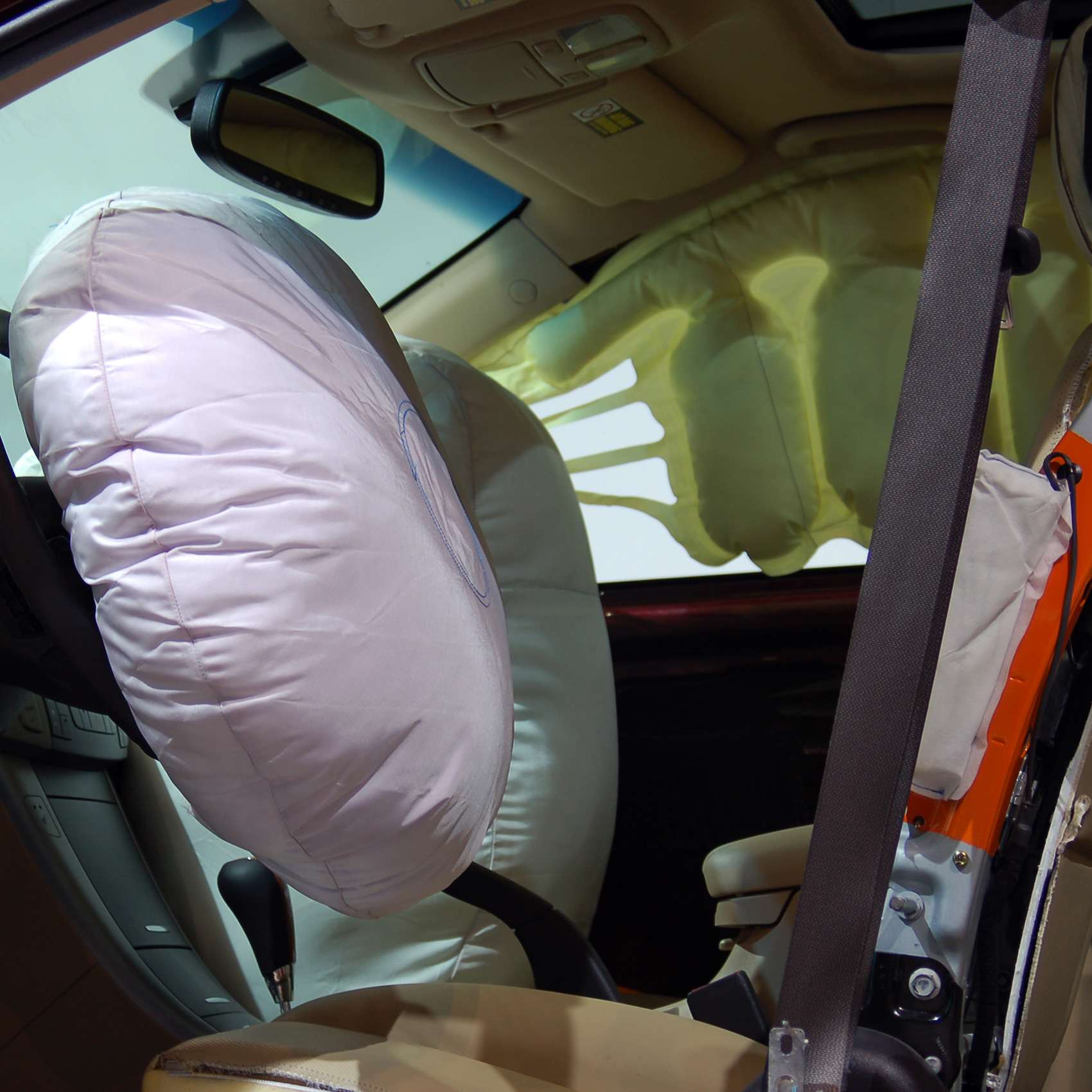
Types of Airbags Used in Modern Cars
Front Airbags
These are the most common type of airbags used today. They’re located on both the driver and passenger sides and instantly deploy in the event of a collision. Front airbags have saved thousands of lives, but they can also cause serious or even fatal injuries to occupants who are sitting too close to them when they deploy. The NHTSA constantly reminds drivers to put on their seatbelts so they don’t dive forward and accidentally find themselves within range of the airbag deployment zone. It’s also advised for children under 13 to sit in the vehicle’s back seat to avoid airbag injuries.

Side Airbags
These are airbags designed to protect drivers and passengers from side-impact collisions. Side airbags are designed to be durable enough to keep metal, broken glass, and other debris from entering the vehicle. They also reduce the possibility of ejection during a crash since they cover most of the windows and doors when deployed.
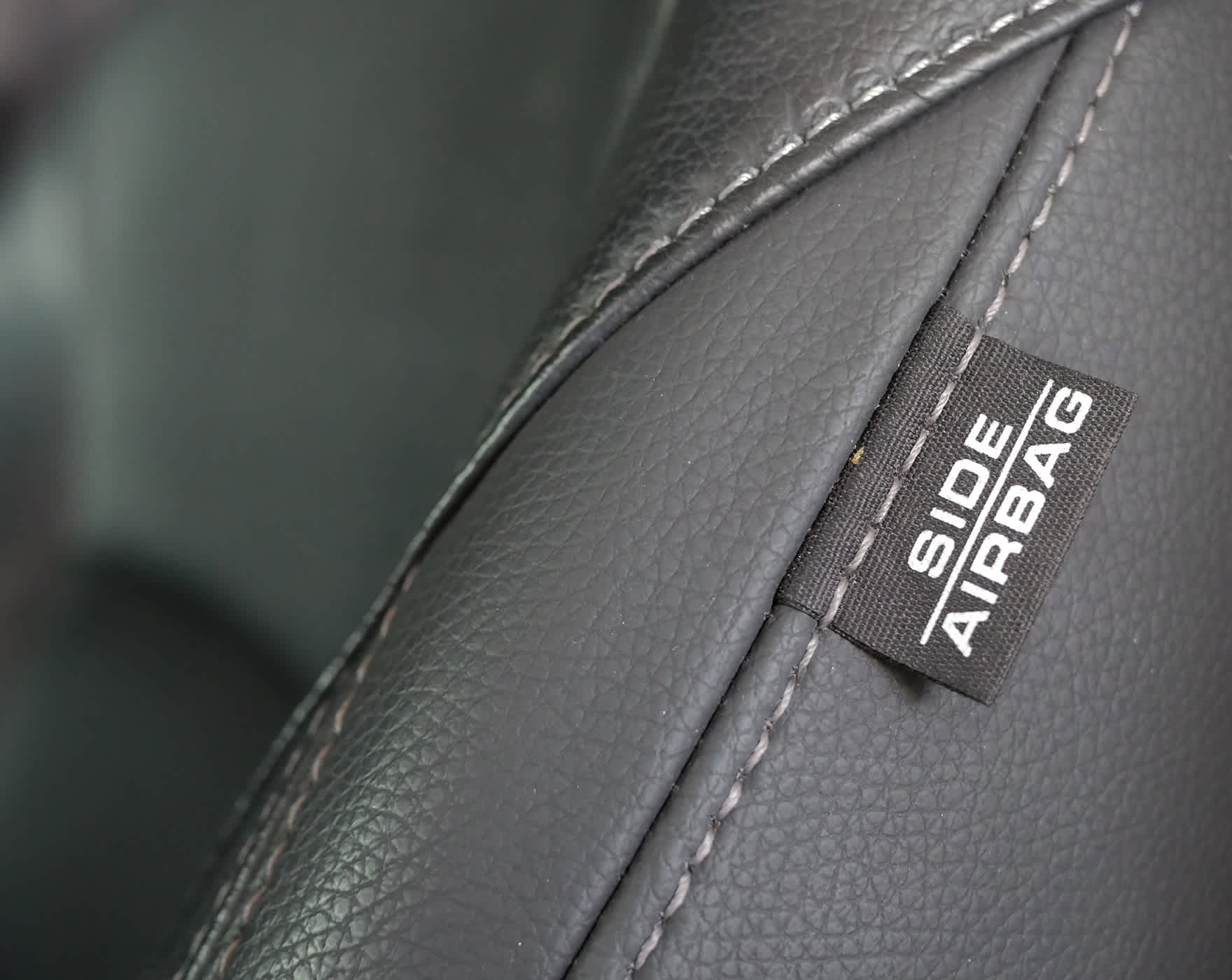
Seatbelt Airbags
These are tubular airbags that unzip from the seams of the seatbelt to cushion rear-seat occupants. Ford was the first automaker to adopt this safety feature in their vehicles back in 2011. Seatbelt airbags cushion the impact of a crash by distributing force over a larger part of the body. They also reduce forward momentum, ensuring that occupants stay in place during a crash.
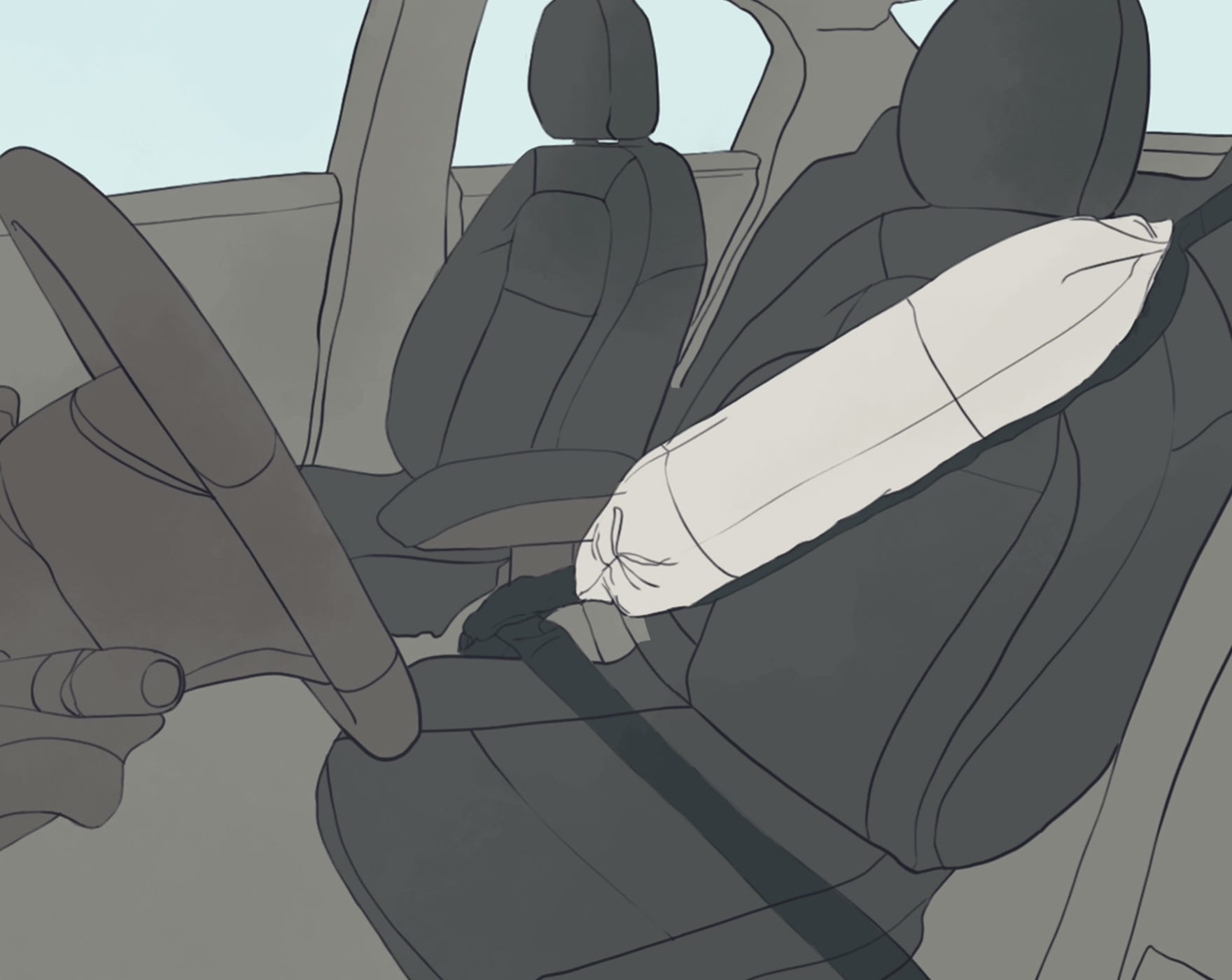
Seat Airbags
These airbags are integrated into the front or rear seats of the vehicle, which are installed in conjunction with side airbags. A severe collision will trigger both the side curtain and seat airbags to activate, protecting the head and torso of occupants.

Knee Airbags
One of the most common injuries one might suffer in the event of a car crash is a shattered kneecap. Because the driver’s legs and feet are nearest to the front of the vehicle, they’re likely to get stuck between the dashboard and the seat after a crash. In theory, knee airbags are designed to mitigate crash forces to reduce the risk of lower body injuries. However, a recent study by the Insurance Institute for Highway Safety (IIHS) revealed an increased risk of lower leg and right femur injuries in small overlap tests. A larger study might provide a more accurate assessment, but for now, we suggest steering clear of knee airbags.

Pedestrian Airbags
These are external airbags intended to protect pedestrians in the event of a frontal collision. Volvo introduced the first pedestrian airbag in the V40 in 2012. The airbag deploys when sensors in the front bumper detect a collision with a pedestrian at speeds ranging from 12 MPH to 31 MPH. Google improves on this technology with its own patented pedestrian airbags, which remove the spring-back effect that knocks pedestrians to the ground after a collision. The material used to make Google's airbags is visco-elastic, which softens rather than repels upon impact. This airbag technology is designed for Google’s self-driving cars, but we’ll get to that later!
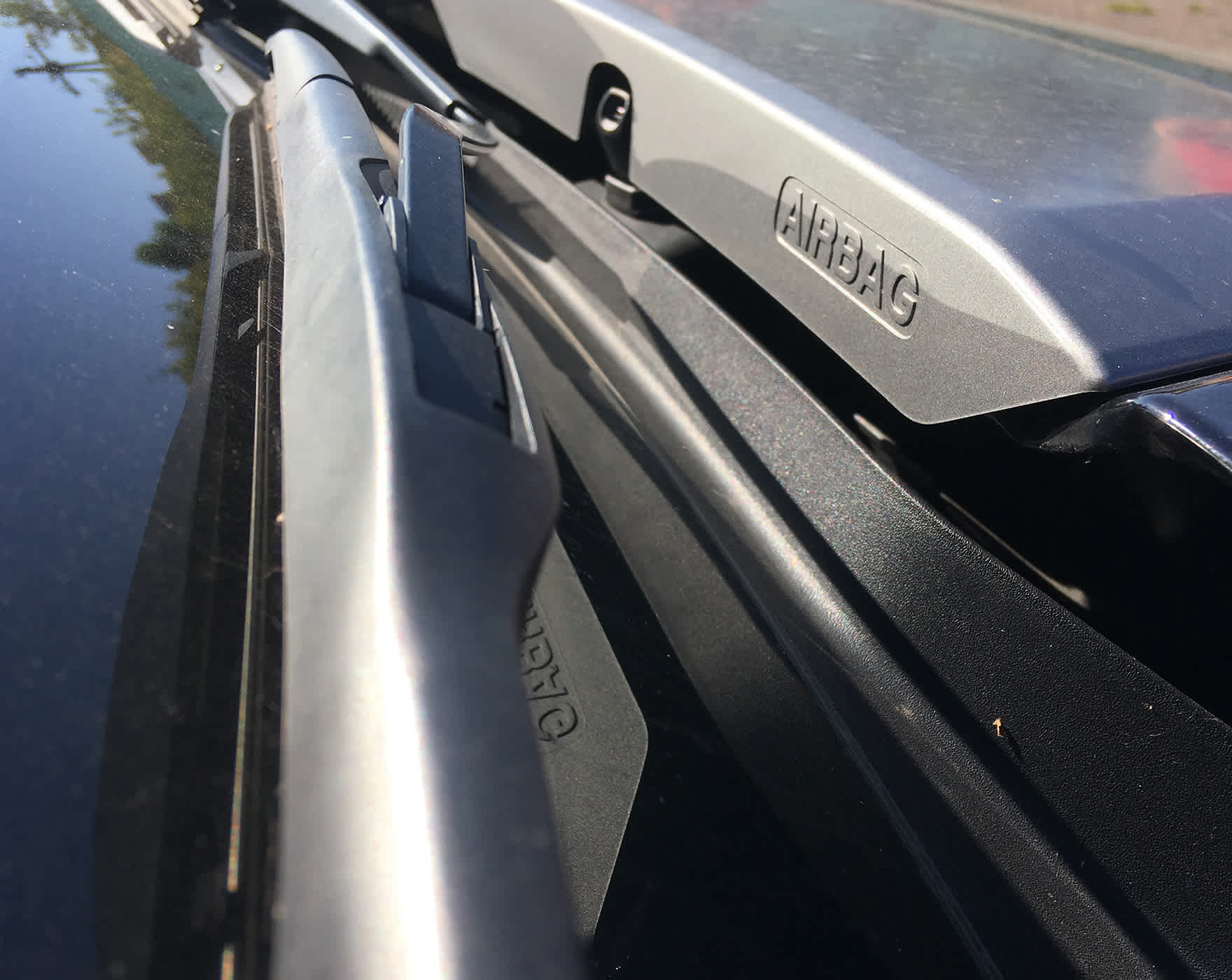
Rear Airbags
Seat belts aren’t enough to restrain back seat passengers from hitting their heads on the front head rest during a crash. Rear seat airbags are designed to complement the seatbelt and reduce the risk of serious injuries for passengers on the rear. The 2021 Mercedes Benz S-Class features frontal rear seat airbags that deploy between the two wings of the backseat. They’re shaped differently from their front-side equivalents in order to accommodate more vulnerable passengers, such as children and the elderly. Because of their partially inflated tubular structure, frontal rear airbags flex upon contact with forward-moving passengers. The added flexibility allows occupants to gently sink into the lattice-like structure.

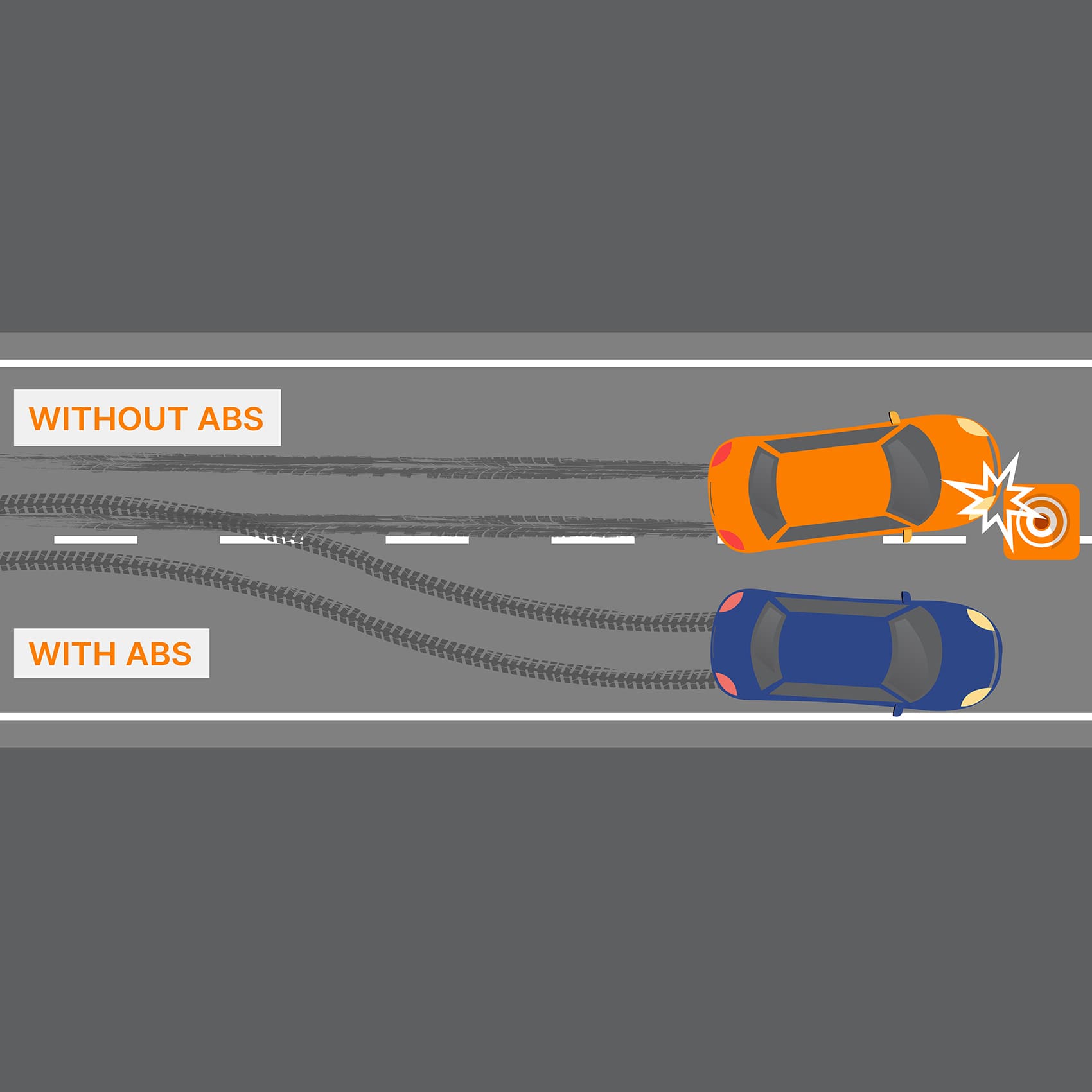
Anti-lock Braking System (ABS)
The anti-lock braking system (ABS) prevents wheels from locking up during hard braking situations. This lets drivers regain control of their vehicle while braking, so they can confidently maneuver around obstacles. The ABS monitors the speed of each wheel and applies brakes at the appropriate time in order to prevent wheel lockup and maintain traction on slippery roads. This generally reduces the stopping distance of ABS-equipped vehicles and reduces uncontrolled skidding.
Advanced Driver Assistance Systems (ADAS)
Advanced driver assistance systems (ADAS) consist of different driving applications designed to help drivers navigate a variety of situations. These computerized systems are intended to reduce the rate of vehicular accidents caused by human errors. Car manufacturers have developed their own proprietary driver assistance systems in order to make driving safer and easier. Here are some of the basic ADAS applications.
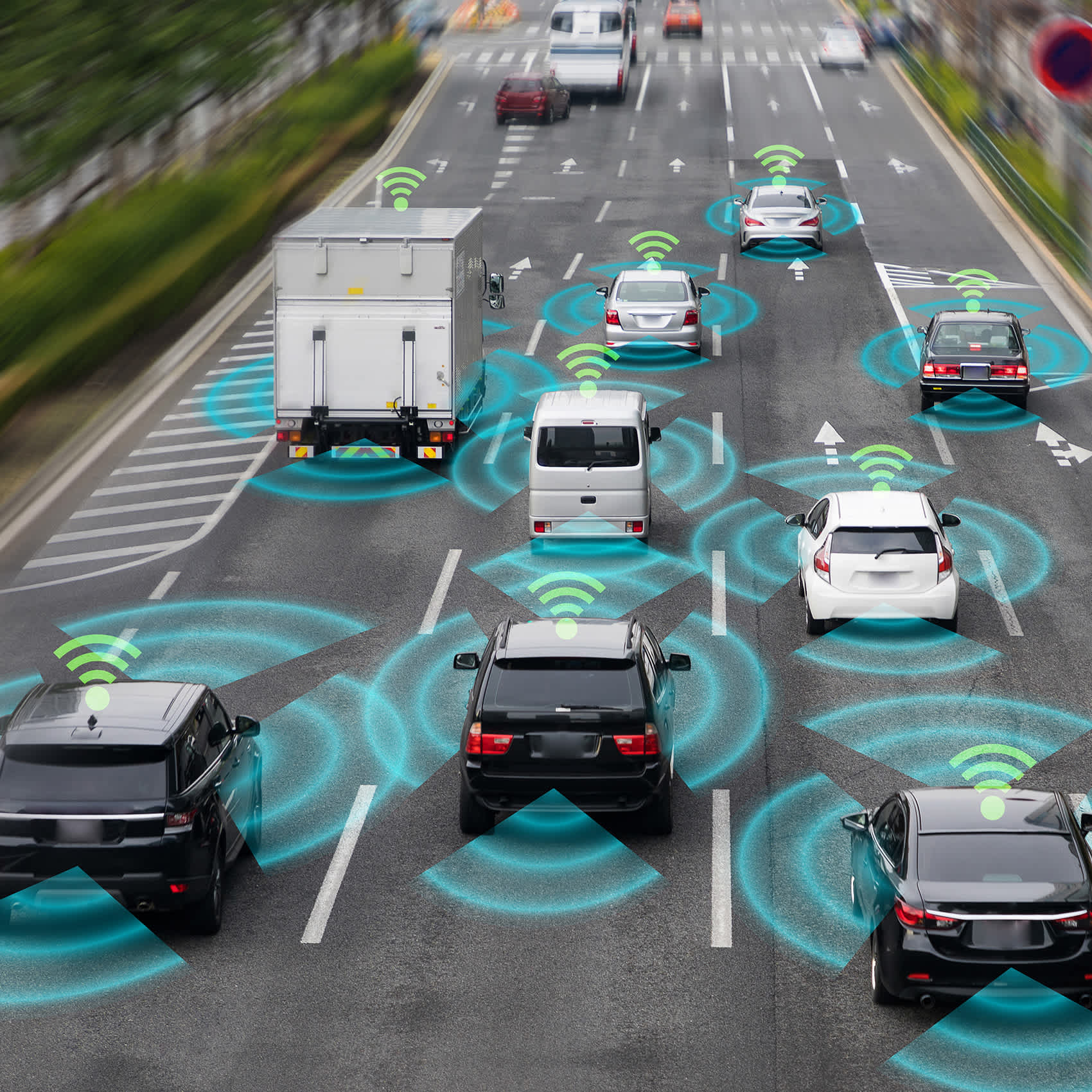
Basic Advanced Driver Assistance Systems Applications
Adaptive Cruise Control
Adaptive cruise control (ACC) is an ADAS application that helps drivers stay safe in various traffic conditions. It uses laser or radar technology to measure the distance between your car and the car in front of you. The system automatically adjusts your speed to maintain a safe driving distance. This is extremely helpful in heavy traffic situations where the slightest miscalculation can lead to fender benders or full-on collisions.
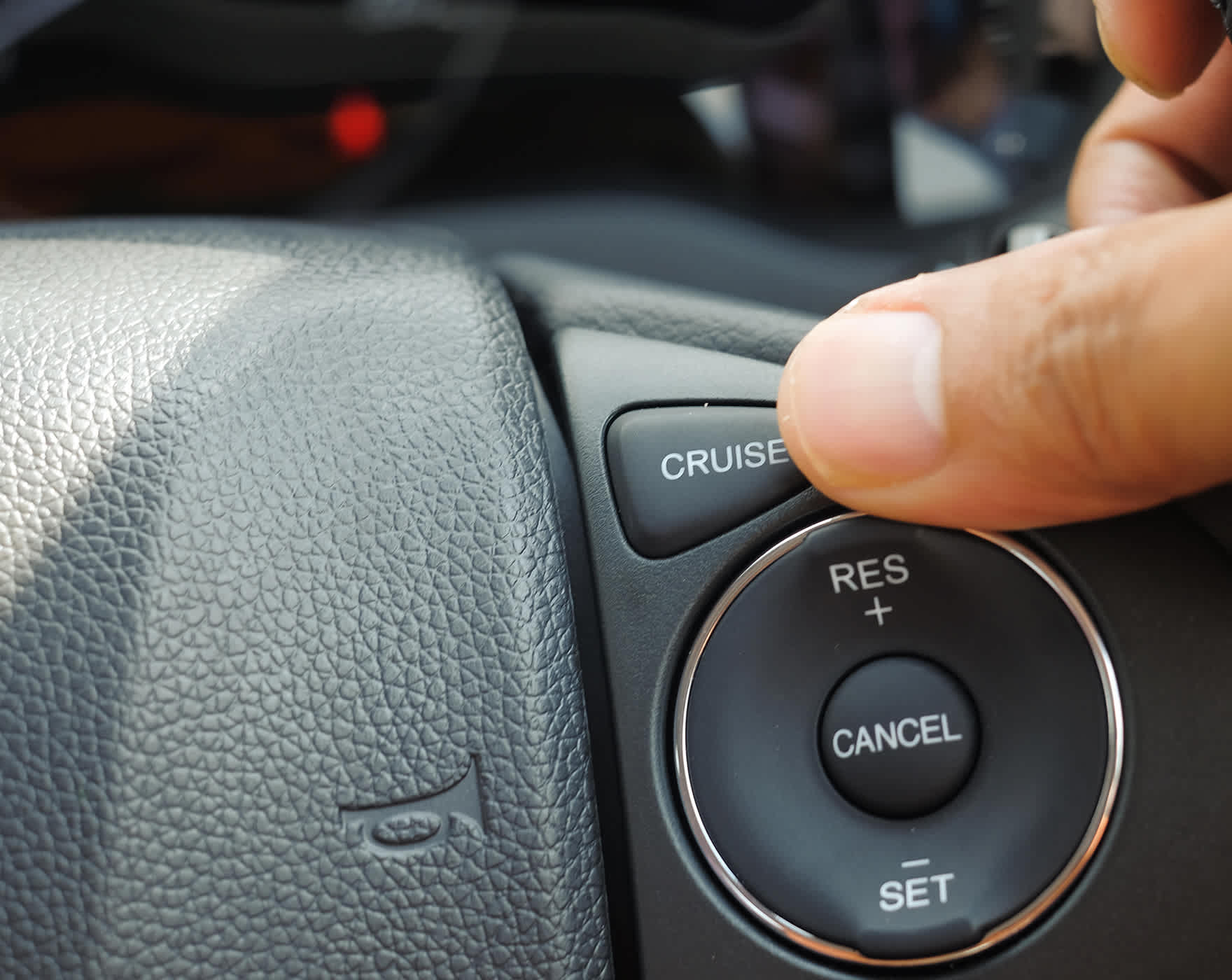
Lane Assist
Drivers who are tired, distracted, or drunk can drift out of their lanes and sideswipe other vehicles. Lane assist systems actively steer the car back into position when this happens. This safety feature typically utilizes multiple sensors and LIDAR (light detection and ranging) to keep your car in your lane. Most systems require you to keep your hands on the steering wheel.
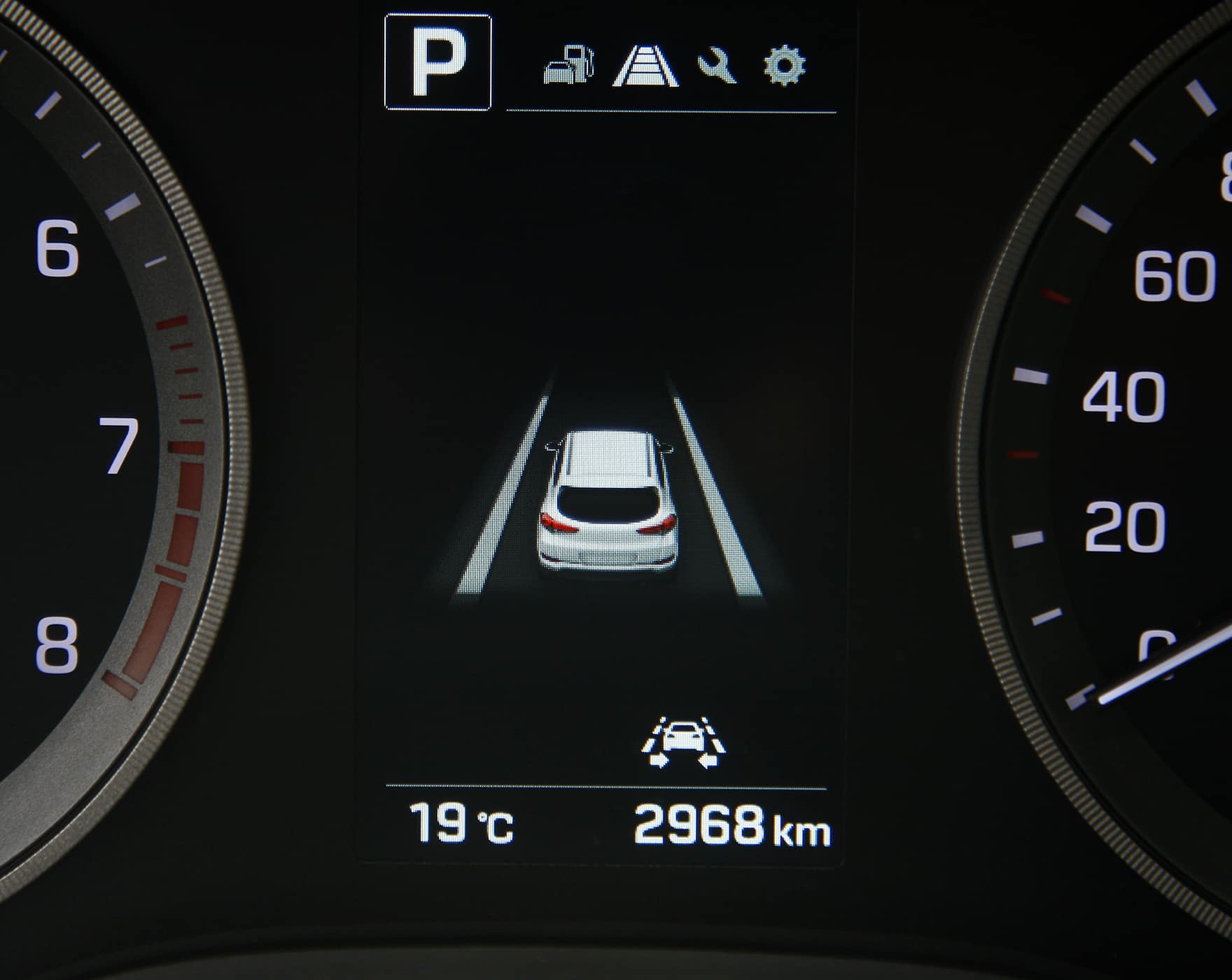
Autonomous Emergency Braking and Collision Avoidance System
Some collisions happen before the driver even gets a chance to react. Cars with autonomous emergency braking systems (AEB) alert the driver when there are objects, cars, or pedestrians up ahead. If the driver fails to respond in time, the AEB slows the vehicle down to a halt. Collision avoidance systems function the same way, on a much broader scale. They can override the driver’s steering inputs, change the throttle, and apply automatic brakes, if needed. These systems work best in city driving scenarios where there are several things moving in and out of view.
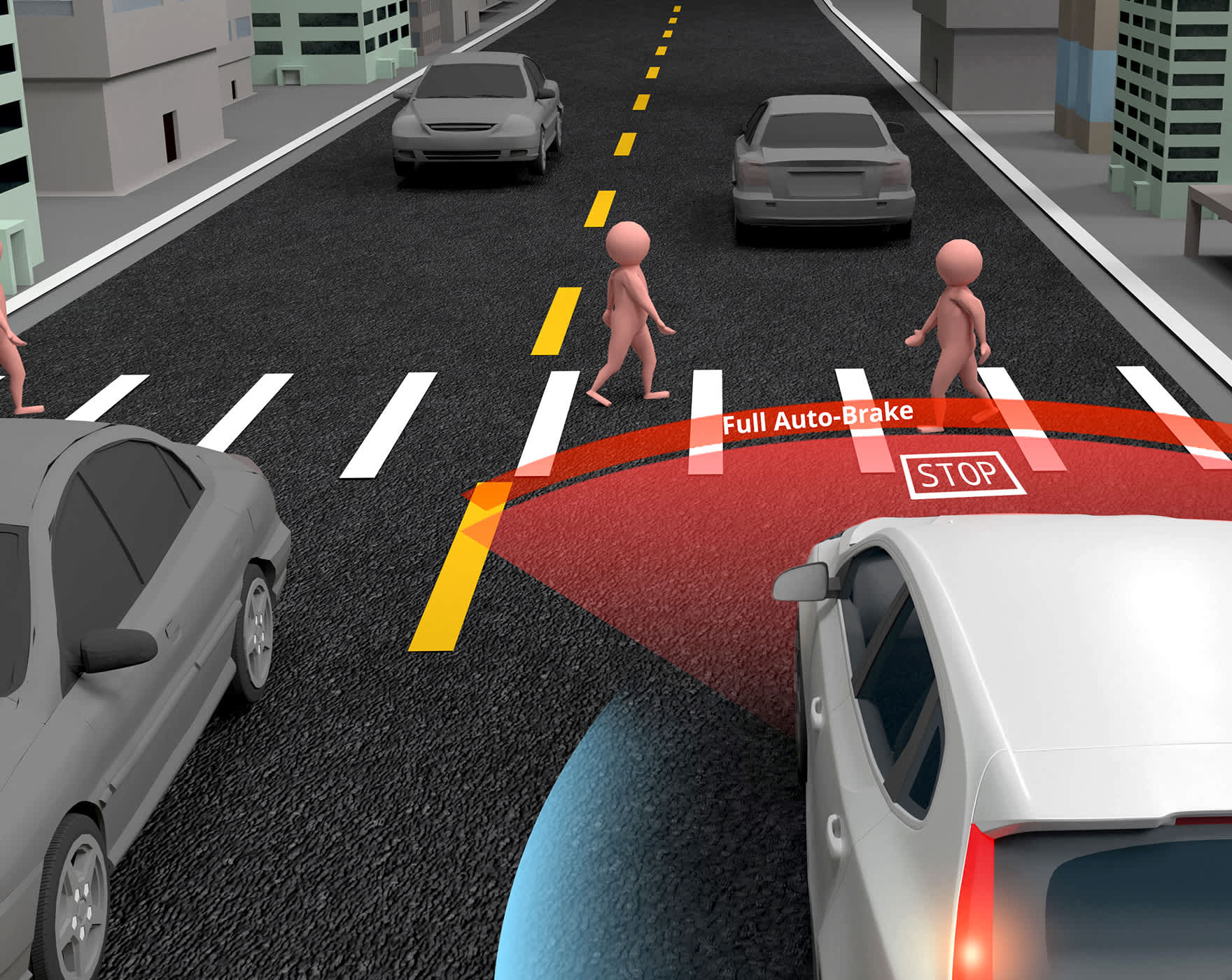
Automatic Parking or Reverse Park Assist
Parallel parking makes many drivers anxious. Some avoid it altogether. Automatic parking mode takes away the unease of performing tricky parking maneuvers. Simply choose a parallel parking spot on the display screen then sit back as your car steers itself towards the designated location. Some self-parking systems will still require you to operate the gas and brake while others do it for you. Reverse park assist is a simpler but no less convenient type of automatic parking that allows you to easily pull up into a spot with the push of a button.
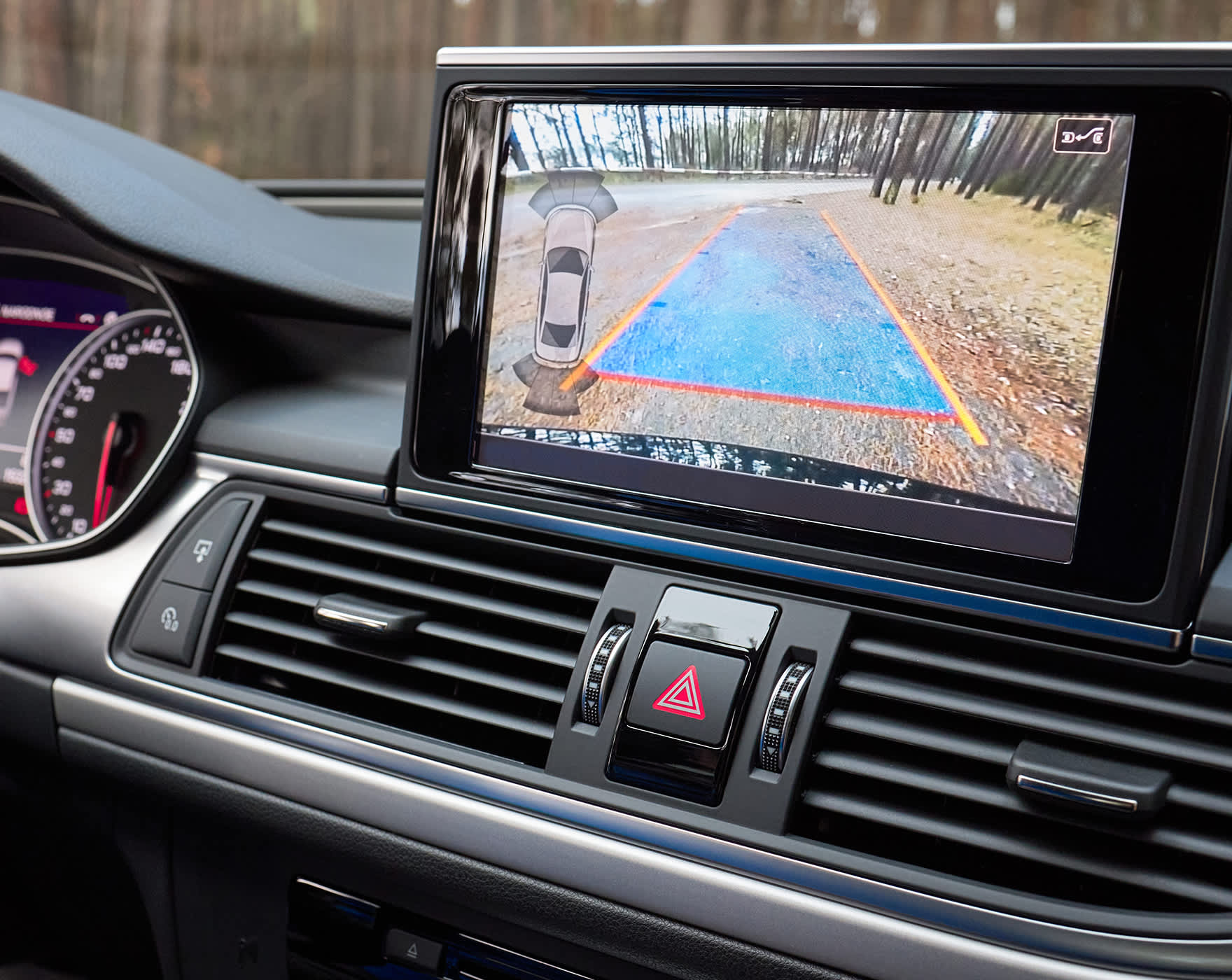
Drowsiness-Detect System
Driving demands full mental awareness. Being tired, stressed, or intoxicated can negatively affect your ability to make quick decisions on the road. Drowsiness-detection systems use multiple sensors to monitor the driver’s head and eyelid movement, steering patterns, and lane position for signs of drowsiness. Every system responds to drowsiness differently. BMW’s Attention Assistant will show graphic symbols on the screen if it senses weird driving behavior. Volvo’s Driver Alert Control will sound an alarm and display a text message advising the driver to get a coffee or take a break if it detects an uncontrolled vehicle.
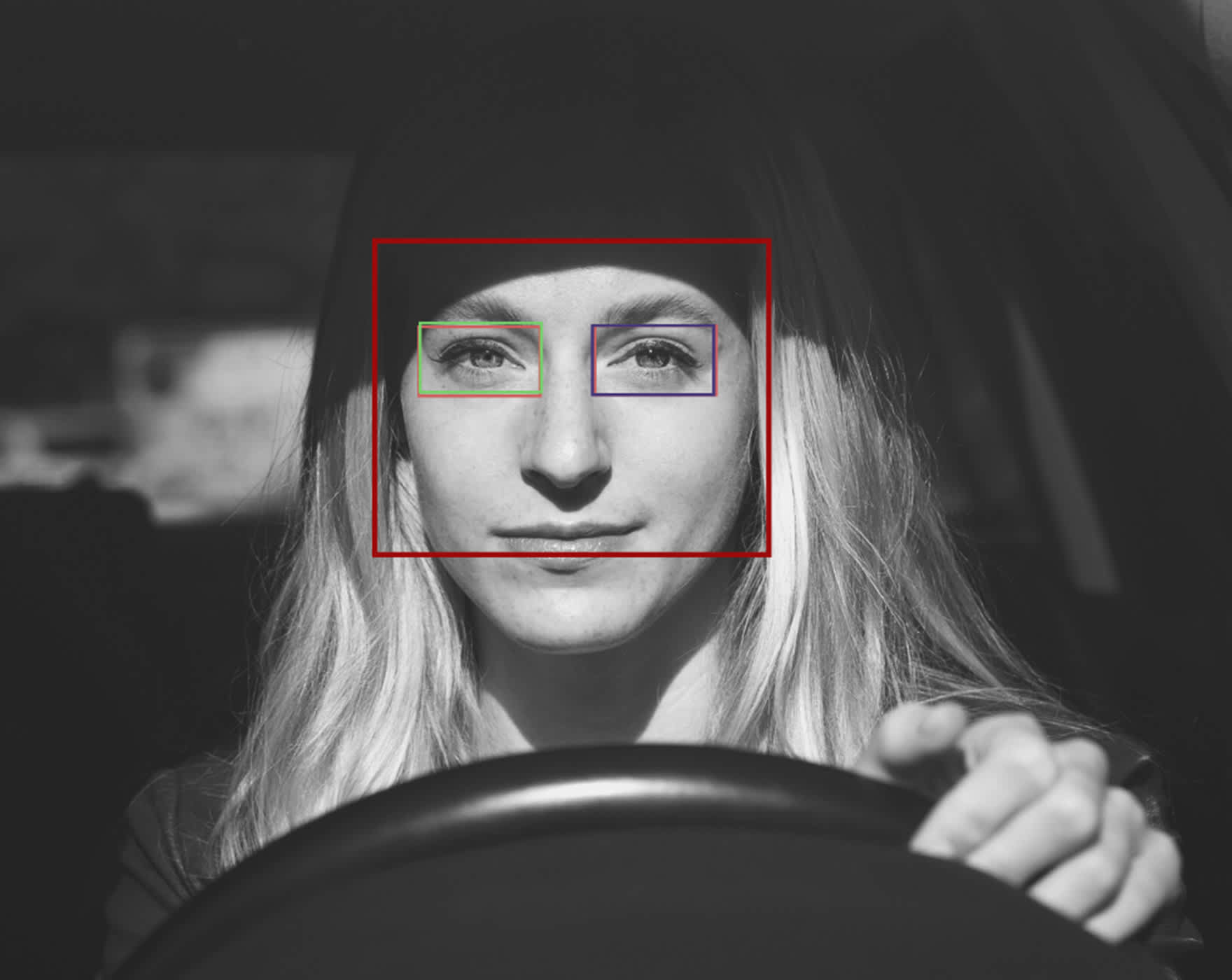
Blind Spot Attention Warning
According to the NHTSA, more than 800,000 blind-spot accidents occur each year. This presents a real problem for drivers when they need to switch lanes quickly on highways, roundabouts, or intersections. Blind-spot monitoring helps drivers navigate these situations more easily with the help of sensors that detect vehicles in adjacent lanes. Some car manufacturers have included live videos in their blind-spot monitoring systems to give drivers more visibility.
Honda’s Lane Watch captures a live video of the vehicle’s right rear using a camera mounted on the bottom part of the passenger side window. Meanwhile, the Audi e-tron lets drivers replace their traditional side mirrors with high-speed cameras capable of taking live footage of the vehicle’s blind spot onto seven-inch displays at the base of A-panels’ pillars.
These examples fall under the passive category since they still require active driver inputs to be effective. However, there are active blind-spot monitoring systems that override the vehicle’s steering and braking to avoid a collision.
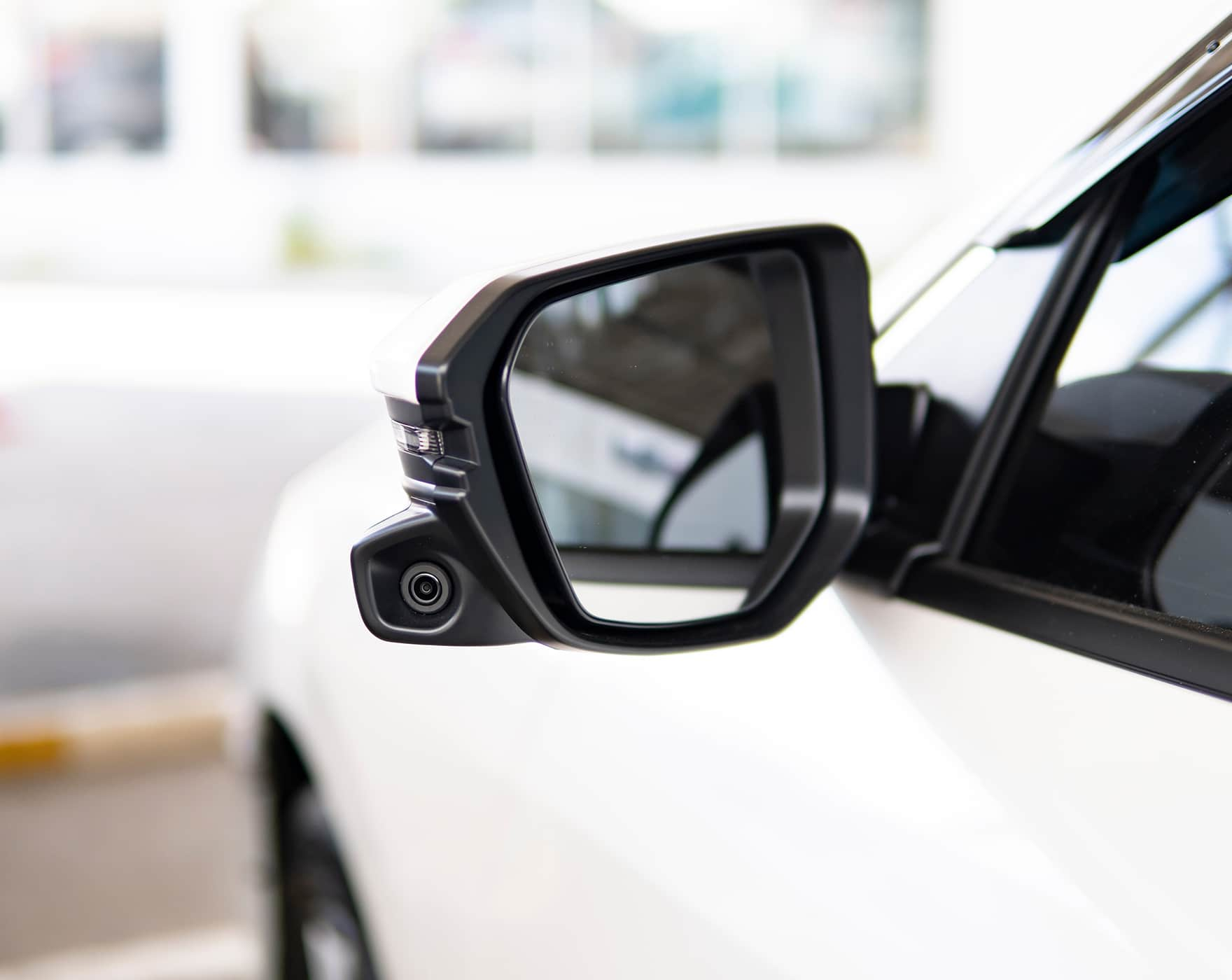
Intersection Collision Warning Systems
The intersection collision warning system (ICWS), also known as intersection-scanning, is an advanced version of the autonomous emergency braking system (AEB) that is standard on most modern cars. It uses a combination of radar and sensors to alert the driver of possible traffic situations at intersections ahead. Just like other safety features mentioned in this article, there are different versions of the ICWS. Ford Escape’s Intersection Assist helps drivers who have entered the path of an oncoming vehicle. It triggers the vehicle’s brakes if it senses a collision.
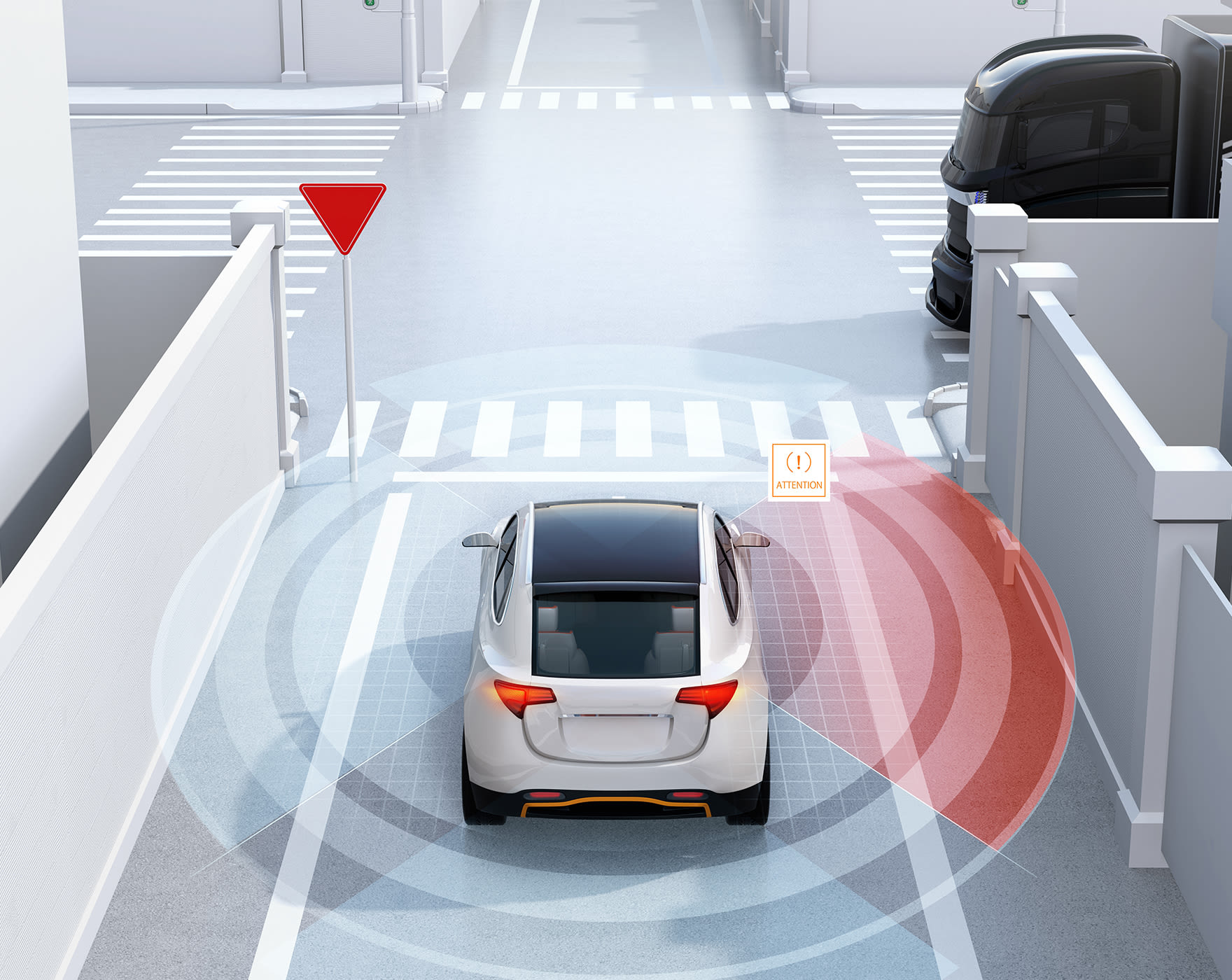

Stability Control Systems
When a vehicle veers off the driver's intended path, the electronic stability control (ESC) kicks in. It guides the vehicle back to safety by utilizing the traction control and anti-lock braking systems. The ESC monitors the driver's steering, the vehicle's momentum, and the cornering forces that could cause the vehicle to spin out of control using a variety of sensors. In certain circumstances, rear or front brakes are applied. Some ESCs lower the engine's power output to improve driver control and reduce the risk of oversteering.
Future Car Safety Features
Remember when you had to ask people for directions? Now you can search for the nearest and most convenient route to your destination using the GPS in your car’s computer. This is a testament to how far automotive technology has come. There are many more safety features in development, but here are a few things we can expect to see in the near future.
Airless Tires
Airless tires represent a major advancement in tire technology from the past fifty years. They're honeycomb-shaped, with outer rings connecting to a series of polymer spokes. This design takes the automobile tire away from its pneumatic roots. Both Bridgestone and Sumitomo have come out with prototype designs, but Michelin has promised to deliver the first-ever 3D-printed airless tire to the market in 2024. Their demo video reveals a sturdy yet flexible prototype capable of going over road hazards without deflating. With this new technology, Michelin hopes to cut down on future tire waste.
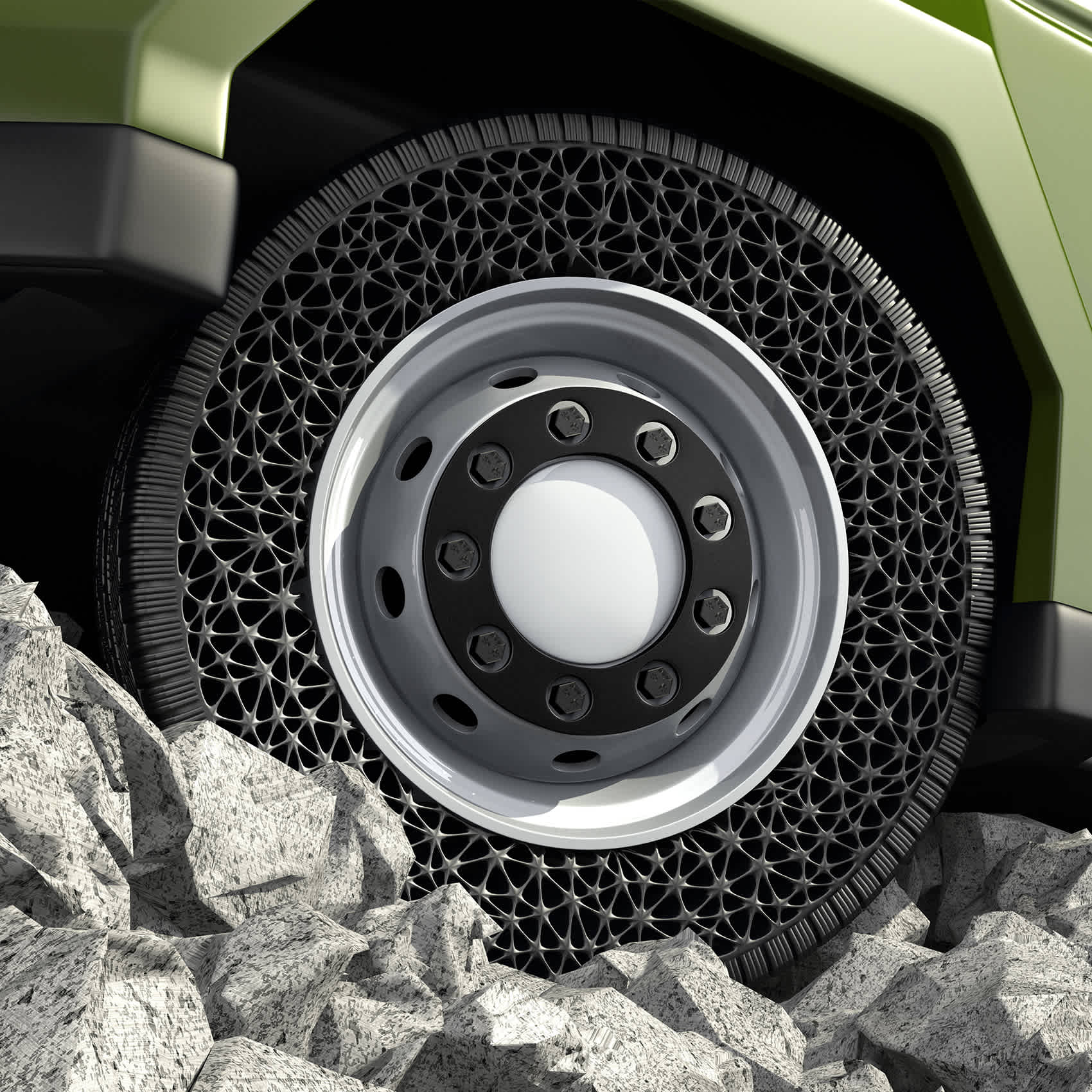
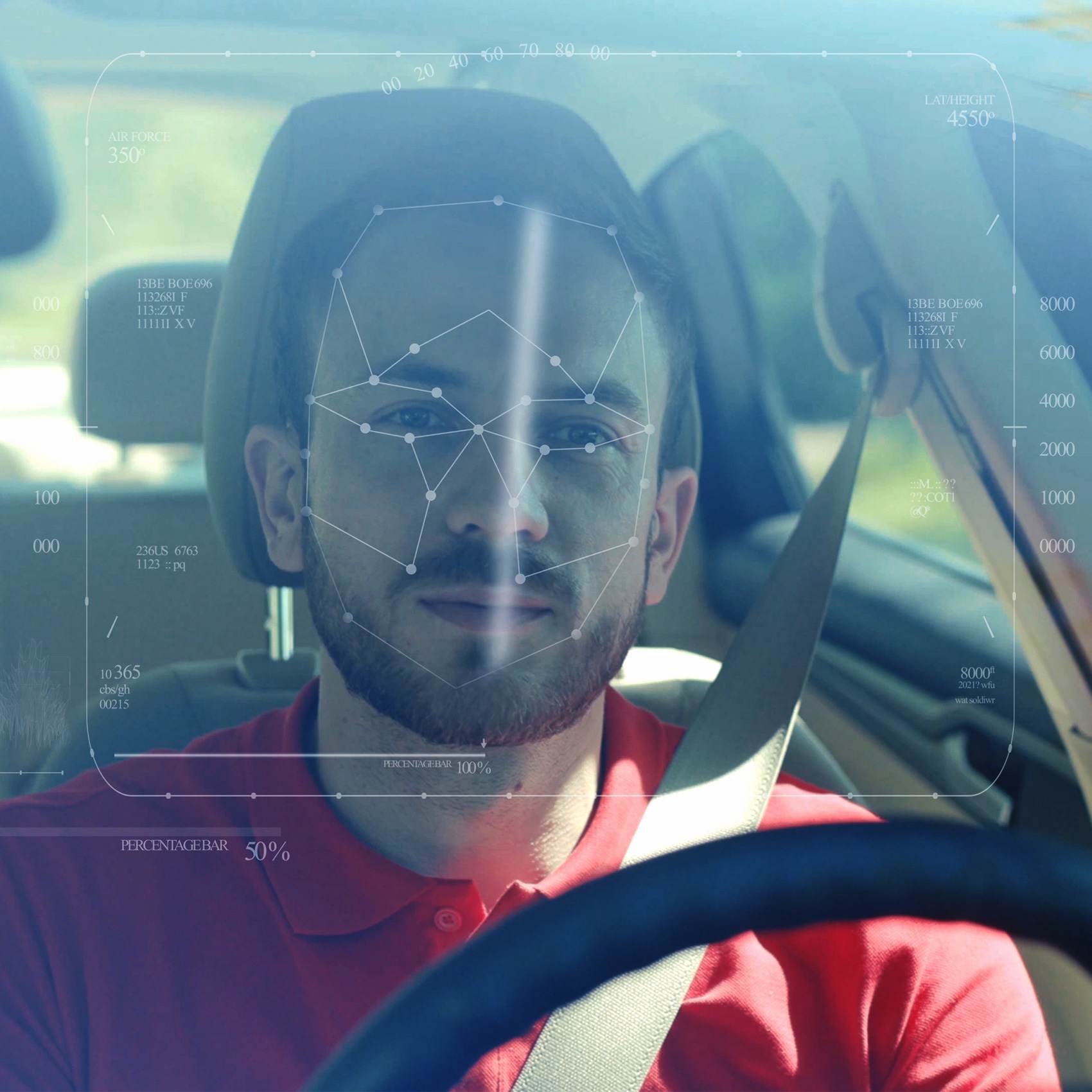
Biometric Sensors
We tend to make mistakes when we’re angry, sad, sleepy, or stressed, and that carries over to the way we drive. Cars with biometric sensors keep track of your mood using facial recognition technology and sensors monitoring pulse, respiration, and sweat levels, to deliver a safer driving experience. Research scientists in Ford are currently developing new algorithms to detect varying states of drowsiness. Meanwhile, Toyota is developing its own smart car concept, which allows the driver to have back-and-forth conversations with their vehicle. The Japanese car manufacturer wants to turn cars from mere modes of transportation to objects of affection. Someday, we might see friendships form between humans and their cars.
Connected Cars
If you’ve ever used the internet to store and access your files, you’ve used the cloud. Almost everything is connected to the cloud these days: appliances, gadgets, and now cars. Connected vehicles are able to communicate with one another, download traffic information, and determine the most efficient routes to your destination. They can react to immediate information in their surroundings and access the cloud to predict traffic jams. This technology aims to cut down on human errors, which account for 81% of vehicle crashes. Lyft’s partnership with General Motors signals a big shift in future ride-hailing services. Soon, we might be able to book a self-driving taxi anywhere in the US.
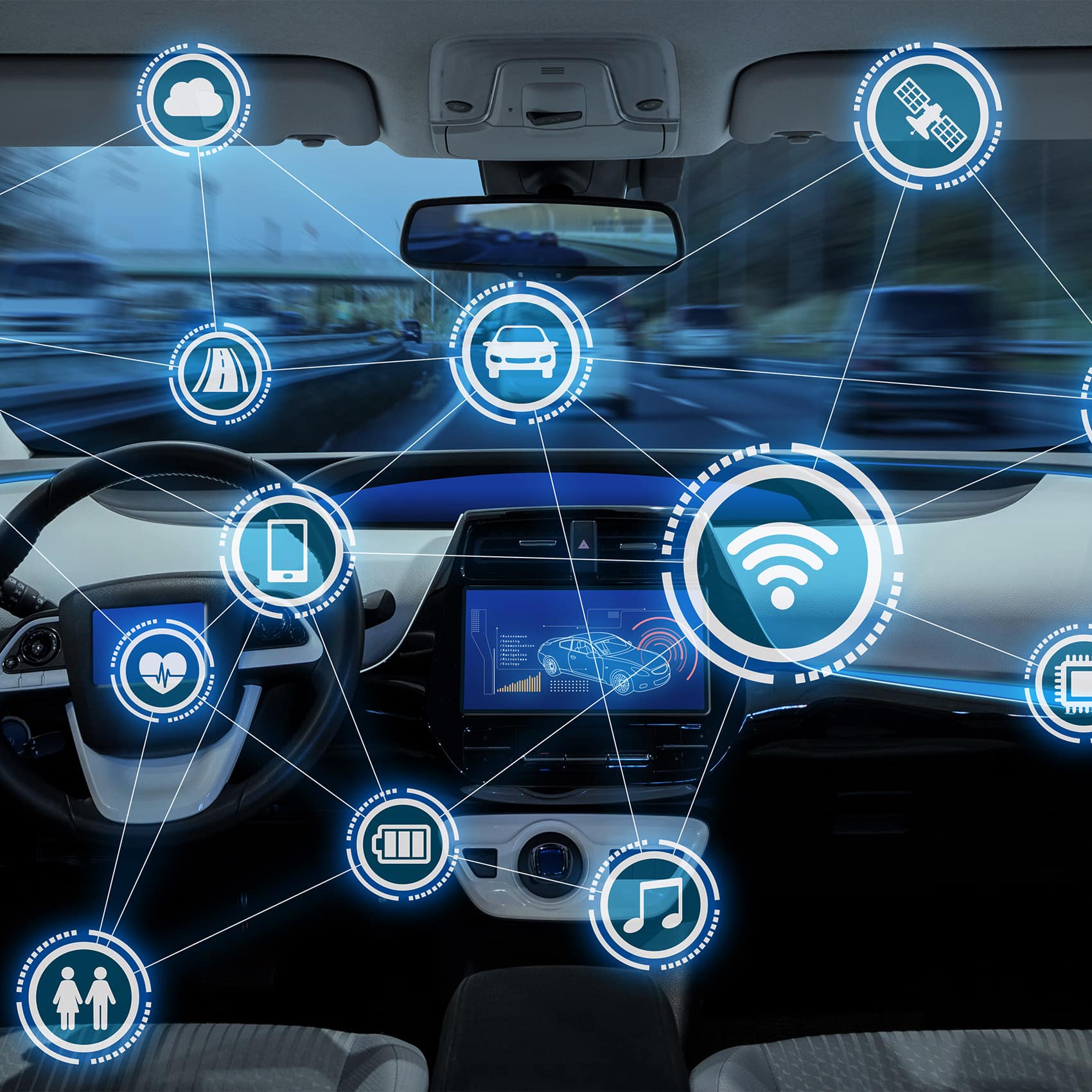
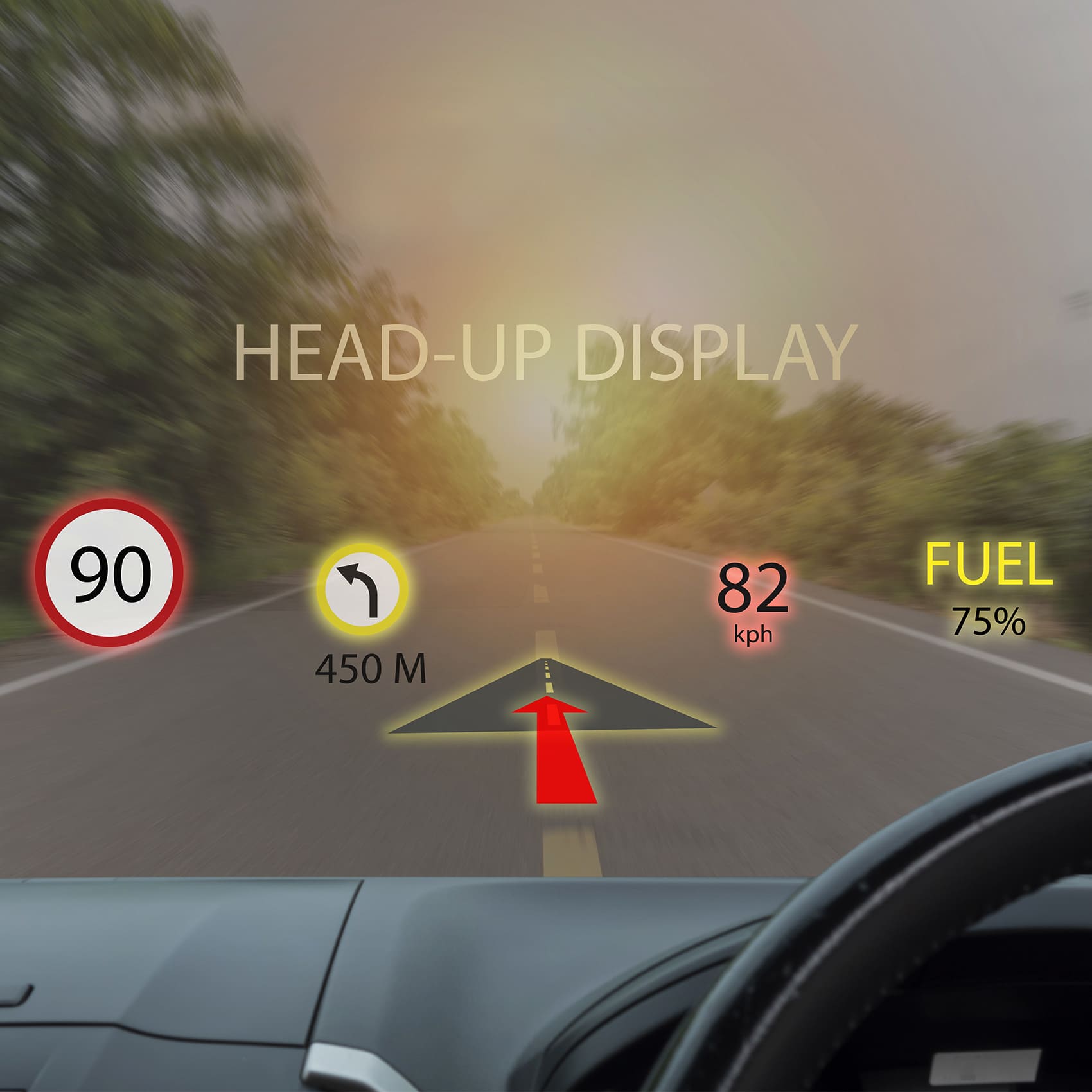
Augmented Reality Dashboards
Augmented reality (AR) has become part of the mainstream tech landscape in recent years. It provides an immersive experience with computer-generated visuals, audio, and other stimuli that you can interact with. Some smart phone apps have used this technology in photo filters and games. Given that augmented reality is one of the hottest tech trends to date, it's natural for automakers to investigate its application in the automotive space. Porsche and Hyundai have reportedly invested millions into developing their own AR integrated systems. This feature will turn the windshield into a giant heads-up display with overlaid text and graphical icons, similar to that of racing games. With the accessibility of smart furniture and apps, it won’t be long before AR-equipped cars hit showrooms.
Thanks to the efforts of car manufacturers, research scientists, and transportation safety agencies, car safety features have indeed come a long way. Millions of lives have been saved, and millions more will be saved as technology advances. Some of these newer features are already in the middle stages of development, so it won’t be long before we get to drive around in safer, more efficient vehicles.
About CarParts.com
For over 20 years, CarParts.com has been a leader in the e-commerce automotive aftermarket, providing collision, engine, and performance parts and accessories. With over 50 million parts delivered, we've helped everyday drivers across the contiguous United States find the right parts to keep their vehicles on the road.
With a focus on the end-to-end customer experience, we've designed our website and sourcing network to simplify the way drivers get the parts they need. Our vehicle selector and easy-to-navigate, mobile-friendly website offer customers guaranteed fitment and a convenient online shopping experience. And with our own wide distribution network, we bring the very best brands and manufacturers directly to consumer hands, cutting out all the brick-and-mortar supply chain costs to provide quality parts at a discount for our loyal customers. Combined with our 60-day return policy and satisfaction guarantee, CarParts.com makes it simple for customers to get parts delivered straight to their door. CarParts.com is headquartered in Torrance, California.

